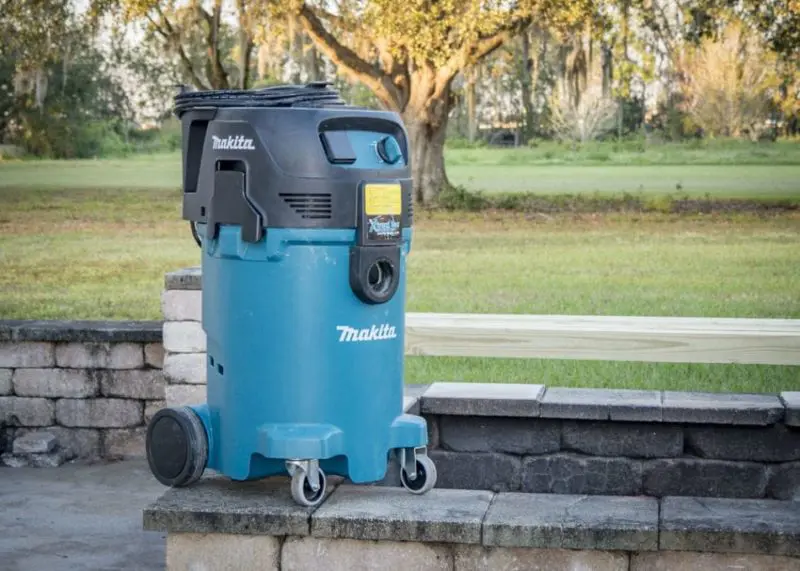In our recent best dust extractor head-to-head among OSHA-compliant models, two numbers were of great importance to us: CFM and water lift. But when it comes to CFM vs water lift on dust extractors, what’s more important?
The answer is both.
Table of contents
Understanding CFM on Dust Extractors
CFM seems to be the sexy number to toss around for both dust extractors and blowers. In both kinds of tools (and vacuum cleaners, for that matter), CFM stands for Cubic Feet per Minute and is a measure of how much air the motor pulls through every minute.
Let’s take Makita’s VC4710 dust extractor as an example. It has 135 CFM. In other words, every minute it pulls enough air to fill a cube that measures roughly 5.1′ on every side. Now that’s pretty helpful – if everything you’re trying to collect is floating around in the air.
Essentially, CFM is what keeps material moving once you have it going. The larger your CFM value, the larger area your dust extractor will influence during use.
Understanding Water Lift on Dust Extractors
The suction force measurement can take on several forms, but you’ll usually see it as water lift or some form of a pressure rating. A quick Google search will allow you to convert pressure measurements into water lift – just make sure you double check the units to get the correct conversion.
Water lift measures the amount of lifting force the vacuum has. As the motor pulls water up a tube, gravity tries to pull the weight of the water back down. Eventually, they meet in the middle when the dust extractor holds all the weight it can. It’s not uncommon for dust extractor like the ones in our shootout to be able to pull 90″ – 100″ in a static water lift test.
Editor’s Note: the diameter of the tube makes a difference. Notice that our shootout results are based on a 2-1/2″ OD tube and don’t necessarily match the manufacturer’s stated test results.
The importance of water lift is that the stronger the pull, the larger the debris your dust extractor can collect. So when I said CFM is great for all the debris floating around in the air, it is. But you need suction force to get anything that’s not floating around moving.
Here’s the crazy thing – that suction force needs to be really close to what it’s collecting. Our dust extractors will start to pick up sawdust from the floor when it gets around 1-1/2″ away from it and concrete dust closer to 1″ away. But it’s most effective when the nozzle is a mere 1/2″ away from what you want to collect. So the smaller or lighter the particle, the easier time your dust extractor has collecting it, but proximity is critical as particles grow in size.
The Final Word on CFM vs Water Lift on Dust Extractors
CFM and water lift have to work together to make an effective dust extractor. Obviously, the higher the number, the better for both values. But like we saw in our cordless blower shootout, a balance of the two is better than having one rating high and the other low. So don’t be fooled by just looking for the biggest CFM number you can find. Compare the suction force (water lift, pressure) value as well to see which one has the best balance of both for the class you’re considering.






